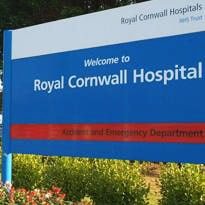Royal Cornwall Hospitals NHS Trust has improved its management of clinical teams at night by deploying Hospital at Night from IMS Maxims.
The system, deployed in 35 wards, is an add-on to the existing browser-based MAXIMS clinical system and also links to the trust’s patient administration system.
Royal Cornwall’s service improvement lead Catherine Cade said it has transformed the trust’s night shift handover process by allowing doctors to create an electronic work list of clinical tasks for patients who require extra attention or intervention.
“By using Hospital at Night, not only can we assess the types of clinical tasks that are being requested, but we can also see where the demand is coming from within the individual wards,” said Cade.
“Further to this, the system allows us to see whether tasks are being carried out within a timeframe. A report can be generated which allows us to see whether these targets are being met, and if not, we can change to improve this.”
The system allows hospital staff to add, update and remove patients from the Hospital at Night work list through a simple data entry screen.
Clinicians can record clinical information such as ‘situation, background, assessment, recommendation’, clinical tasks and clinical responses. They can also make notes on the patient throughout the night, for handover to the doctors who will be working the following day on the ward.
“Part of our aim was to ensure that if, for example, a second clinician is needed for a medical issue at night, we are able to investigate this and work to get the right person.
"That might be a healthcare assistants, nurses or doctors. The aim is to get the right person to the patient the first time round as efficiently as possible, rather than the wrong person quickly,” explained Cade.
“Having looked at staffing rotas at night, we wanted to provide a safe, effective and competent multi-professional team with the right sort of skill mix and staff numbers to meet the immediate needs of patients.
She said clinicians have adopted the system “extremely well” because junior doctors were involved in the development process and the technology is consequently very simple to use.
“It also helped that doctors were already using IMS MAXIMS for other systems at the trust such as order communications and eDischarge, meaning that they were familiar with the technology,” she added.

